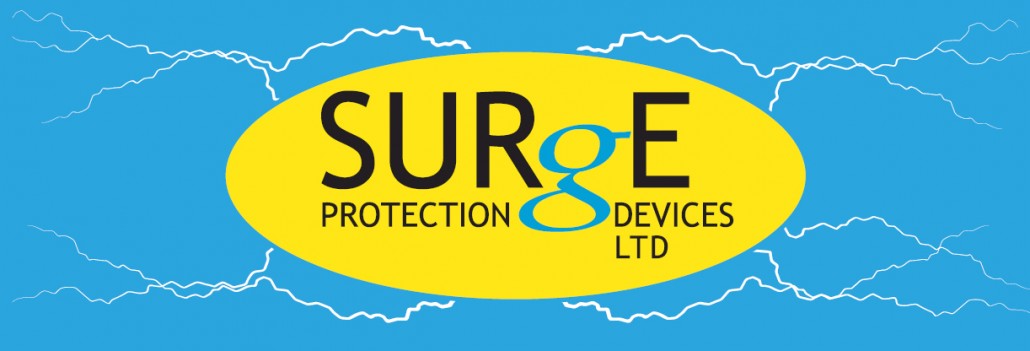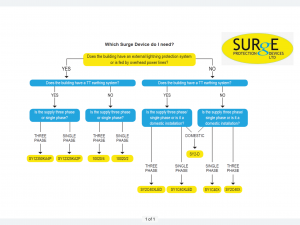How to choose an SPD
Due to the changes in the 18th edition there has been the sudden appearance of many surge protection experts, so as a company with over 50 years of experience in the surge protection industry, the technical team at Surge Protection Devices Ltd would like to give you some pointers on how to choose an Surge Protection Device (SPD) for your installation.
Types of Protection
When discussing different types of surge protection, there are three main types:
| Type | What it does | Where to use it |
| Type 1 | Protection against direct Lightning strikes | At the mains incomer of any electrical installation where external Lightning Protection is installed, or is fed by overhead lines. |
| Type 2 | Surge Protection | At the mains incomer of any building that doesn’t need any lightning protection, and for use on any sub boards more than 10-15 meters from the main panel. |
| Type 3 | End equipment protection | On any piece of equipment where a low let through voltage is needed. |
The types of surge protection are combined in most units, giving you two main types. Lightning Protection or Surge Protection.
What are we protecting against?
For the majority of installations we are protecting against surges. A surge is a voltage spike, these are very short elevations in the voltage supplying electrical equipment. Surges can be caused by quite a few different factors, such as switching events. In a domestic property this could mean switching on your washing machine, or commercially, all of the computers in an office being turned on at the same time when staff arrive for work, and industrially, generators or machinery that uses a high level of power when turning on. Nearby lightning strikes can also cause surges in the system as lightning can travel a long distance underground interfering with electrical equipment up to 2 miles away. So in most cases we are looking at a type 2 on the main incomer and type 2 on any subsequent sub boards.
What about lightning?
The only time that a direct lightning strike becomes a consideration is if the building has either an external lightning protection system, or if the building is fed directly by over head power lines. In these two considerations both will cause a lighting strike to be transmitted directly on to the incoming panel of an installation. In these cases we would be looking at a type 1 device on the main incomer and type 2 on any subsequent sub boards.
How surge protection works
When a surge is detected by an SPD, the excess voltage is diverted to earth. The device then resets itself and is ready for the next surge. This whole process takes place in about 25 nano-seconds, so is extremely fast. The supply to the rest of the installation is never disrupted, as its only the over voltage which will be diverted to earth.
How to choose a device
Ok, so now we know what type of surge protection we need, now we need to consider which device. The most important things to consider are:
• Is the device suitable for your earthing arrangement?
This is one of the most common issues with SPD installation. The most important consideration is for TT systems, where the device needs to be suitable. Surge Protection Devices LTD provide Devices suitable for every earthing arrangement, and are happy to assist in choosing the correct device for your installation
• Is the device protecting both the live & neutral poles?
There are a few devices on the market with may seem inexpensive compared to other devices, but if the device is not protecting both live & neutral, surges may enter your property and bypass the SPD.
• What warranty does the manufacturer provide?
This is generally a key indicator of the quality of the components used in the SPD. Surge Protection Devices LTD provide a 10 year warranty with all of our products
• Do you feel confident that the manufacturer could assist with any technical information you may need?
With surge protection, you may require some additional information to complete your installation. You will need to have confidence in the manufacturer of the SPD to ensure they can help assist you. Surge Protection Devices LTD are the leading manufacturers of surge protection devices, we have been supporting customers in the U.K. market for many years. We work with leading training organisations to hold seminars around the country to expand the knowledge of surge protection and we also sit on the JPEL panel to aid in the production of the latest regulations.
• Is the device from a trusted source?
Are you buying from a reputable wholesaler or distributor? Surge Protection Devices LTD have national accounts with all of the major Wholesalers in the UK, and we also work with many Independent Wholesalers to ensure you are provided with the correct information when you purchase your device.
For more information on any of the devices or would like to discuss your installation further, please give us a call in the office on 01484 851747, or visit our website www.surgedevices.co.uk









